Embrace Nature's Palette: Plant Spring Wildflowers for a Garden Alive with Color and Whispers of the Wild
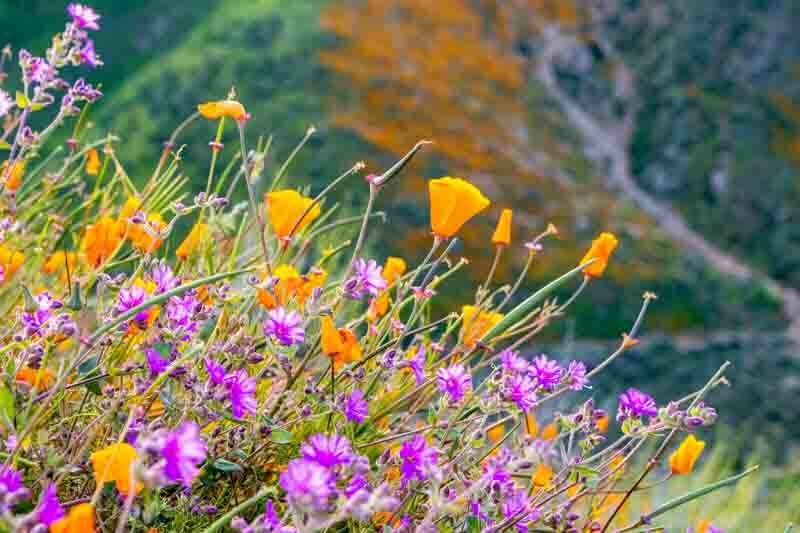
Spring wildflowers bring a unique charm to gardens, offering a blend of natural beauty and ease of care that many gardeners appreciate. As harbingers of spring, these flowers emerge with the season’s warmth, turning gardens into tapestries of color and texture. Wildflowers are not only visually appealing but also beneficial for local ecosystems, attracting and supporting a range of pollinators, from bees to butterflies.
Incorporating wildflowers into a garden can create a more natural, relaxed aesthetic. Unlike cultivated garden plants, wildflowers are often more resilient and adapted to local climates, requiring less maintenance. They can thrive in a variety of soil types and conditions, often withstanding the challenges of local weather patterns better than non-native species.
Wildflowers can be used in various garden styles, from formal borders to meadow-like settings. They are particularly effective in cottage gardens and naturalized areas where they can grow freely. Some wildflowers are annuals, blooming for one season and sowing their seeds for the next year, while others are perennials, returning each spring to grace the garden with their presence.
Planting wildflowers is also a way to contribute to biodiversity. These plants provide essential habitats and food sources for wildlife, contributing to the health of local ecosystems. Whether used as accents in a mixed border or as the main feature in a garden area, wildflowers offer simplicity, beauty, and a connection to the natural world.
Native to Texas, Lupinus texensis (Texas Bluebonnet) is a low-growing winter-hardy annual with elongated clusters of fragrant, blue and white pea-like flowers. Blooming in early to late spring, they attract bees and butterflies. Texas Bluebonnet forms attractive rosettes in winter and is commonly seen along roadsides. It thrives in sunny gardens and is easy to cultivate.
| Hardiness | 4 - 8 |
|---|---|
| Exposure | Full Sun |
| Season of Interest |
Spring (Early, Mid, Late) |
| Height |
1' - 2' (30cm - 60cm) |
| Spread |
1' - 2' (30cm - 60cm) |
Castilleja indivisa, or Texas Indian Paintbrush, is a striking annual or biennial known for its vibrant red spikes, 3-8 inches long, atop erect stems. Blooming in spring, it features tiny, creamy white to pale yellow flowers encircled by petal-like bracts, creating a dazzling display. An essential nectar source for hummingbirds and insects like butterflies and bees, its small black or gray seeds ensure prolific blooming annually. It creates a spectacular visual when mass-planted
| Hardiness | 6 - 11 |
|---|---|
| Exposure | Full Sun |
| Season of Interest |
Spring (Early, Mid, Late) |
| Height |
6" - 2' (15cm - 60cm) |
| Spread |
5" - 6" (13cm - 15cm) |
Lupinus perennis (Wild Lupine) is a perennial with clusters of deep blue flowers from mid-spring to mid-summer. The flowers attract butterflies, hummingbirds, and pollinators. After blooming, hairy seed pods ripen and eject seeds several feet away. Wild Lupine is a nitrogen-fixing plant that thrives in sandy soil and is ideal for perennial borders, prairie reconstructions, and naturalized areas.
| Hardiness | 3 - 8 |
|---|---|
| Exposure | Full Sun, Partial Sun |
| Season of Interest |
Spring (Mid, Late) Summer (Early, Mid) |
| Height |
1' - 2' (30cm - 60cm) |
| Spread |
10" - 2' (25cm - 60cm) |
Aquilegia canadensis, or Canadian Columbine, is a native of eastern North America’s woodlands and rocky slopes. This award-winner showcases nodding, long-spurred flowers with scarlet sepals and pale yellow petals, atop fern-like foliage. Blooming in late spring to early summer, it forms a bushy clump, 24-36 inches tall, thriving in moist soil. While short-lived, it self-seeds prolifically, illuminating shade gardens with its resilient beauty.
| Hardiness | 3 - 8 |
|---|---|
| Exposure | Full Sun, Partial Sun |
| Season of Interest |
Spring (Late) Summer (Early) |
| Height |
2' - 3' (60cm - 90cm) |
| Spread |
1' - 2' (30cm - 60cm) |
Sanguinaria canadensis (Bloodroot) is a perennial known for its striking white flowers. Blooming in spring, the flowers have yellow stamens and usually eight petals. The plant’s blue-gray leaves unfurl as the flowers emerge, and the foliage remains attractive until summer. Sanguinaria canadensis spreads through rhizomes, forming a beautiful carpet over time. Ideal for woodland gardens and shaded areas. Native to eastern and central North America.
| Hardiness | 3 - 8 |
|---|---|
| Exposure | Partial Sun, Shade |
| Season of Interest |
Spring (Early, Mid) |
| Height |
6" - 10" (15cm - 25cm) |
| Spread |
3" - 6" (8cm - 15cm) |
Dicentra cucullaria, known as Dutchman’s Breeches, is a captivating perennial native to eastern North America. It forms a lush clump of delicate, blue-green foliage with charming white, pantaloon-shaped flowers featuring yellow tips, blooming in mid to late spring. These blossoms elegantly dangle along arching stems, resembling porcelain earrings above the feathery leaves. After its brief but enchanting flowering period, the plant dies back, making it a delightful early spring addition to woodland gardens.
| Hardiness | 3 - 8 |
|---|---|
| Exposure | Partial Sun, Shade |
| Season of Interest |
Spring (Mid, Late) |
| Height |
6" - 1' (15cm - 30cm) |
| Spread |
6" - 1' (15cm - 30cm) |
Mertensia virginica, or Virginian Bluebells, is an early spring bloomer forming compact clumps. It displays nodding, trumpet-shaped violet-blue flowers, about 1 inch across, that open from pink buds and gradually turn sky-blue. Blooming in early to mid-spring, these flowers attract bees, butterflies, hummingbirds, and moths, lasting several weeks. Its smooth, blue-green foliage, about 4 inches long, fades by mid-summer as the plant enters dormancy. Pairing well with summer annuals or shade-loving perennials, Virginian Bluebells add unique beauty to spring gardens and are easy to grow.
| Hardiness | 3 - 8 |
|---|---|
| Exposure | Partial Sun, Shade |
| Season of Interest |
Spring (Early, Mid) |
| Height |
1' - 2' (30cm - 60cm) |
| Spread |
1' - 2' (30cm - 60cm) |
Baileya multiradiata, commonly known as Desert Marigold, is a resilient perennial native to the southwestern United States. It showcases bright yellow, daisy-like flowers atop silvery-green, woolly foliage. Thriving in arid conditions, it blooms profusely from spring to fall, adding a splash of color to xeric landscapes and rock gardens. Its drought-tolerant nature makes it a staple in water-wise gardening.
| Hardiness | 7 - 10 |
|---|---|
| Exposure | Full Sun |
| Season of Interest |
Spring (Early, Mid, Late) Summer (Early, Mid, Late) Fall Winter |
| Height |
1' - 2' (30cm - 60cm) |
| Spread |
2' - 3' (60cm - 90cm) |
Dodecatheon meadia, or Shooting Star, is a stunning perennial native to eastern and central North America. It boasts 8-20 nodding, cyclamen-like flowers in white or pink, with swept-back petals and yellow stamens. Blooming in late spring, these blossoms rise from a basal rosette on upright scapes, forming eye-catching colonies.
| Hardiness | 4 - 8 |
|---|---|
| Exposure | Full Sun, Partial Sun, Shade |
| Season of Interest |
Spring (Late) |
| Height |
9" - 2' (23cm - 60cm) |
| Spread |
9" - 1' (23cm - 30cm) |
California Poppies (Eschscholzia Californica) effortlessly grace gardens with their blue-green foliage and golden blooms. Flourishing from late spring to early fall, or fall through winter in mild climates, they display a palette of creamy-yellow, scarlet, lilac, pink, and white. Treated as annuals or perennials in zones 8-10, these low-maintenance, drought-tolerant flowers self-seed without being invasive, adding charm and color with minimal effort.
| Hardiness | 8 - 10 |
|---|---|
| Exposure | Full Sun |
| Season of Interest |
Spring (Early, Mid, Late) Summer (Early, Mid, Late) Fall |
| Height |
6" - 1' (15cm - 30cm) |
| Spread |
6" - 8" (15cm - 20cm) |
Podophyllum peltatum (May Apple) is a perennial prized for its unique foliage and flowers. Native to eastern North America, it forms striking clumps with large, shiny, umbrella-like green leaves. In spring, it produces solitary, nodding white to rose-colored flowers, 3 inches wide, often nestled beneath the foliage. The eye-catching fruits that follow are edible when fully ripe and can be used in preserves. May Apple, going dormant in summer, forms a lush groundcover in shaded, moist areas, creating dense colonies with its slow spread.
| Hardiness | 3 - 9 |
|---|---|
| Exposure | Partial Sun, Shade |
| Season of Interest |
Spring (Mid, Late) |
| Height |
1' - 2' (30cm - 60cm) |
| Spread |
10" - 1' (25cm - 30cm) |
Pulsatilla vulgaris, or Pasque Flower, an award-winning early-blooming perennial, presents a profusion of large, showy blossoms, 2-3 inches wide, on short stems each spring. A single plant can produce over 30 blooms in shades of blue and purple, set off by golden yellow stamens. Following the flowers are decorative, clematis-like, fluffy seedheads. Its silky, ferny foliage remains appealing all season. These self-seeding plants go dormant in summer and are perfect for rock gardens or front borders, pairing well with spring bulbs and ground covers, offering extended interest.
| Hardiness | 4 - 8 |
|---|---|
| Exposure | Full Sun |
| Season of Interest |
Spring (Early, Mid, Late) |
| Height |
9" - 1' (23cm - 30cm) |
| Spread |
9" - 1' (23cm - 30cm) |
Geum triflorum (Prairie Smoke) is a unique prairie plant with purple to reddish-pink, nodding flowers in late spring. These blooms give way to remarkable seed heads with elongated 2-inch styles, resembling plumes of smoke hovering close to the ground, dispersing seeds via wind or animals. The enthusiastic flowers rise above fern-like, blue-green leaves, which stay attractive all season and sometimes turn deep red in fall. Native to North America, this rhizomatous perennial forms slow-spreading clumps, making an excellent ground cover with a season-long appeal.
| Hardiness | 3 - 8 |
|---|---|
| Exposure | Full Sun |
| Season of Interest |
Spring (Late) Summer (Early) Fall |
| Height |
6" - 2' (15cm - 60cm) |
| Spread |
6" - 1' (15cm - 30cm) |
Rudbeckia hirta (Black-Eyed Susan) is a biennial or short-lived perennial famous for its bright yellow, daisy-like flowers with dark chocolate centers, each 3 inches wide. Blooming from early summer to fall, these flowers draw butterflies, birds, and pollinators. They stand on stiff, upright, hairy stems with lance-shaped leaves. Native to Eastern and Central North America, this prairie plant self-seeds readily, maintaining its garden presence. Tolerant of heat, drought, and various soils (except wet), Black-Eyed Susan thrives in natural settings, creating a stunning display as other plants begin to wane.
| Hardiness | 3 - 9 |
|---|---|
| Exposure | Full Sun |
| Season of Interest |
Summer (Early, Mid, Late) Fall |
| Height |
2' - 3' (60cm - 90cm) |
| Spread |
1' - 2' (30cm - 60cm) |
Silene virginica (Fire Pink) is a striking perennial, forming clumps with lance-shaped leaves and radiant clusters of scarlet red flowers. Blooming abundantly from mid-spring to early summer, each 2-inch-wide flower showcases five slender, cleft petals and sticky sepals. These blossoms, rich in pollen, attract hummingbirds and butterflies. Native to eastern North America, this wildflower may self-sow in ideal conditions. Perfect as an accent in shaded rock gardens, Fire Pink also enhances wildflower, native, woodland, and cottage gardens with its vivid beauty.
| Hardiness | 4 - 8 |
|---|---|
| Exposure | Full Sun, Partial Sun |
| Season of Interest |
Spring (Mid, Late) Summer (Early) |
| Height |
1' - 2' (30cm - 60cm) |
| Spread |
10" - 2' (25cm - 60cm) |
Geranium maculatum (Spotted Cranesbill) is a clump-forming perennial ideal for dry shade. It produces numerous upward-facing, saucer-shaped, pale lilac-pink flowers with creamy-white centers and faint veins. These float above shiny, medium green foliage, divided into 5-7 lobed leaves that turn fawn and red in fall. Following the flowers are unique, beaked seed capsules, inspiring the name ‘crane’s bill’. A versatile addition, it fits beautifully in rock gardens, borders, or meadows, offering both aesthetic appeal and adaptability to challenging conditions.
| Hardiness | 3 - 8 |
|---|---|
| Exposure | Full Sun, Partial Sun |
| Season of Interest |
Spring (Late) Summer (Early) |
| Height |
1' - 2' (30cm - 60cm) |
| Spread |
1' - 2' (30cm - 60cm) |
Noted for its considerable charm, Hepatica nobilis (Liverleaf) is a slow-growing semi-evergreen perennial producing a profusion of violet-blue or purple flowers with conspicuous white stamens in early spring. Almost stemless, the weather-resistant flowers open their fullest on sunny days and stay open for a few weeks. The leaves are kidney-shaped, three-lobed, often with silvery marbling above. One plant can sprout up to seven stems. Hepatica nobilis is the most widely distributed species and a popular garden plant, bursting with color when it is most needed, a jewel in the stark landscape.
| Hardiness | 5 - 8 |
|---|---|
| Exposure | Partial Sun |
| Season of Interest |
Spring (Early) |
| Height |
3" - 4" (8cm - 10cm) |
| Spread |
4" - 5" (10cm - 13cm) |
Arisaema triphyllum (Jack in the Pulpit) is a unique tuberous perennial with some of the most intriguing flowers in nature. Its blossoms feature a deep purple to green spathe, streaked with purple, enclosing a spadix with tiny flowers, blooming for a few weeks in mid to late spring. The spathe and spadix remain visually appealing longer. Native to eastern North America, this woodland wildflower sports two large, glossy leaves, each with three leaflets. In summer, smooth, shiny green berries mature to bright red, drawing birds and mammals before the plant enters dormancy. Ideal for woodland gardens, it’s easy to grow, low-maintenance, and prolific in tuber production.
| Hardiness | 4 - 9 |
|---|---|
| Exposure | Partial Sun, Shade |
| Season of Interest |
Spring (Mid, Late) Summer (Early, Mid, Late) |
| Height |
1' - 2' (30cm - 60cm) |
| Spread |
1' - 2' (30cm - 60cm) |
Trilliums are cherished woodland wildflowers, adored for their symmetrical beauty. These rhizomatous perennials boast exquisite blooms and mottled foliage, creating a captivating display in shade gardens. With their resilience and harmonious blending among other woodland plants, Trilliums are a true gem of the spring season.
| Hardiness | 3 - 9 |
|---|---|
| Exposure | Partial Sun, Shade |
| Season of Interest |
Spring (Mid, Late) Summer (Early) |
| Height |
1' - 2' (30cm - 60cm) |
| Spread |
1' - 2' (30cm - 60cm) |
Highly coveted and visually stunning, Cypripedium (Lady’s slipper orchid) are rhizomatous perennials with unique slipper-shaped flowers. With over 50 species, these hardy terrestrial orchids can be found in America, Europe, and Asia. The distinctive inflated pouch or labellum of these orchids adds to their allure, making them a prized addition to any garden.
| Hardiness | 2 - 9 |
|---|---|
| Exposure | Partial Sun |
| Season of Interest |
Spring (Mid, Late) Summer (Early, Mid) |
Designing a garden with spring wildflowers can create a vibrant, dynamic space that connects you to nature while providing habitat for local wildlife. Here’s how to integrate these natural beauties into your garden:
Choose the Right Location: Most spring wildflowers thrive in sunny to partially shaded areas. Select a spot that matches the light requirements of your chosen plants.
Soil Preparation: Wildflowers generally prefer well-drained soil. Amend your soil with compost to improve its structure and fertility. Some flowers, however, are adapted to poor soil conditions and may require little to no soil amendments.
Plant Diversity: Choose a variety that blooms at different times during spring to ensure a continuous display of color. Consider height, color, and texture to create visual interest and harmony.
Natural Groupings: Plant wildflowers in clusters or drifts to mimic their natural growth patterns. This approach not only looks aesthetically pleasing but also makes a more significant impact in attracting pollinators.
Incorporate Native Species: Including native wildflowers in your design benefits local ecosystems as they are well-adapted to your region’s climate and provide food and shelter for native wildlife.
Layer with Perennials: Intersperse wildflowers with perennials that will continue to provide interest after the wildflowers have faded. This ensures your garden remains vibrant throughout the growing season.
Create Pathways: Design paths through or around your wildflower areas to allow for easy viewing and maintenance without disturbing the plants.
Edge with Low-Growing Species: Border your wildflower garden with low-growing species to create a tidy edge and define the space.
Consider Wildlife: Choose wildflowers that are known to attract pollinators, birds, and beneficial insects. Providing a water source nearby can also enhance wildlife attraction.
Maintenance: While wildflowers are generally low-maintenance, regular weeding, especially in the early stages of growth, can help them establish. Deadheading spent blooms may encourage a second flowering and prevent unwanted self-seeding.
By following these guidelines, you can create a stunning and ecologically beneficial garden space that celebrates the beauty and simplicity of spring wildflowers.
Spring gardens burst into life with a variety of flowers, each heralding the end of winter. Tulips and daffodils add vibrant colors, while fragrant lilacs and hyacinths infuse the air with sweetness. Irises, peonies, and magnolias provide elegant beauty, and early bloomers like crocuses and snowdrops offer the first signs of spring’s renewal. Together, they create a stunning seasonal display.
Attracting bees to your garden is not only a joy for nature lovers but also essential for pollinating plants. To help you create a bee-friendly haven, consider planting the best flowers that bees adore. Lavender, with its fragrant purple spikes, is a bee favorite. Sunflowers, featuring large, pollen-rich blooms, are a beacon for pollinators. Coneflowers, with their vibrant petals and abundant nectar, draw in bees of all kinds. Bee balm, as the name suggests, is a top choice, offering both nectar and pollen. Explore our guide to learn more about the best flowers to attract bees and make your garden a haven for these essential pollinators.
Annuals are known for their bright colors, showy blooms, and ability to provide continuous color throughout the growing season. They are often used to fill gaps in perennial flower beds, as border plants, in container gardens, or as bedding plants to create seasonal displays in gardens and landscapes.
Flower bulbs, the heralds of spring and summer, offer a kaleidoscope of colors and forms. From the early cheer of Tulips and Daffodils to the summer splendor of Dahlias and Lilies, they are the heartbeats of gardens, promising annual rebirth and a continual feast for the eyes.
Celebrate the beauty of your local landscape by planting native annual flowers – a burst of color that benefits both you and the environment!
Tulips, daffodils, hyacinths and crocus: these are the spring bloomers everyone knows. But there are hundreds of other, lesser-known beauties to plant in fall. Some are small and delicate, others tall and ungainly. All are fabulous. Wait till you see them!
Here’s a list of 40 famous dahlia varieties, noted for their unique beauty, color, form, and popularity among gardeners and floral enthusiasts
Edible flowers, an enchanting addition to culinary arts, offer a blend of unique flavors, colors, and aromas. From the peppery taste of nasturtiums to the sweet, floral essence of violets, they enhance salads, desserts, and drinks. Common edible flowers include marigolds, lavender, pansies, and calendula, elevating dishes with their natural beauty.
In the winter garden, vibrant flowers like Hellebores, Witch Hazel, and Winter Jasmine defy the cold, offering splashes of color. Snowdrops and Winter Aconites emerge through frost, signaling spring’s approach, while Camellias and Daphnes provide beauty and fragrance, turning the bleak winter landscape into a showcase of resilience and life.
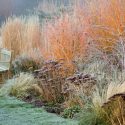

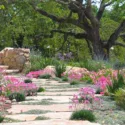
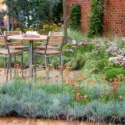
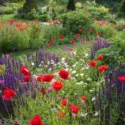
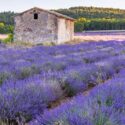
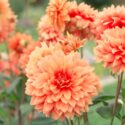
Create a membership account to save your garden designs and to view them on any device.
Becoming a contributing member of Gardenia is easy and can be done in just a few minutes. If you provide us with your name, email address and the payment of a modest $25 annual membership fee, you will become a full member, enabling you to design and save up to 25 of your garden design ideas.
Join now and start creating your dream garden!
Create a membership account to save your garden designs and to view them on any device.
Becoming a contributing member of Gardenia is easy and can be done in just a few minutes. If you provide us with your name, email address and the payment of a modest $25 annual membership fee, you will become a full member, enabling you to design and save up to 25 of your garden design ideas.
Join now and start creating your dream garden!